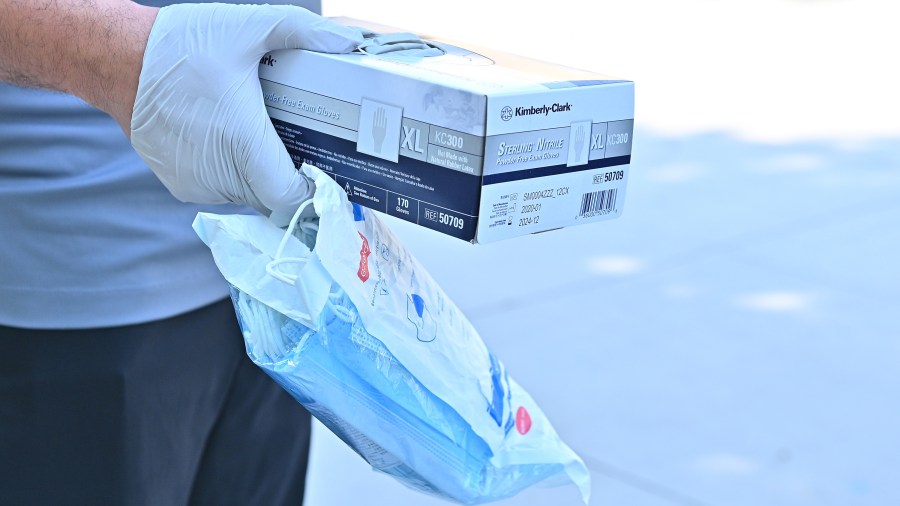Rethinking indoor air to stop the spread of COVID-19

As we learn more about how COVID-19 spreads, it’s clear that air flow is a big deal, and that’s why masks are effective at slowing infection. That’s a problem for offices and commercial buildings and some homes because over the last couple of decades buildings have less ventilation. Instead, they recirculate air to save energy by not letting that cooled or heated air escape. But these buildings also end up recirculating viruses, especially if heating and cooling systems aren’t paired with really good filters that remove viral particles from the air.
I spoke with Jeffrey Siegel, a professor of engineering at the University of Toronto who specializes in indoor air quality. He says it’s a great time to talk about all of this. The following is an edited transcript of our conversation.

Jeffrey Siegel: All of a sudden, I hear people talking about ventilation and filters. And I think that will have real positive effects because those things can certainly help us in reducing the risk of COVID-19. But they’ll also help us have better indoor air quality, which has just a host of other benefits in terms of sick leave, productivity, cognitive function, respiratory health. To the extent there’s a silver lining, there’s an opportunity here, too.
Molly Wood: It is my understanding that a lot of existing [heating, ventilation and air conditioning] systems, particularly in commercial buildings, do recirculate a lot of air in order to keep either cooled or heated air in the system. That was for efficiency purposes?
Siegel: That’s absolutely correct.
Wood: So in hindsight, was that a terrible mistake?
Siegel: No, absolutely not. We have a climate crisis. Energy use associated with buildings is a very big part of our energy footprint. Conditioning that air is one of the big users of energy within a building. So it’s important that we do it in an energy-efficient manner. I think that the bigger problem is that we have to be much more cognizant of how we’re managing ventilation. I think COVID-19 adds some variables to how we might manage ventilation. But in general, I think that we have the tools to do it. It might take some investment and so on, [but] we just have to be a little bit more proactive and engaged in how we manage the ventilation in our systems.
Wood: So do these kinds of hybrid solutions exist in a way that doesn’t have to sacrifice efficiency?
Siegel: Yes. You can imagine very simply a system, which is common in many buildings, that detects whether people are present. And if people are present, then you can provide more ventilation than when people aren’t present. Obviously, energy matters, but I think most people would say that the COVID-19 risk is larger, so we might choose to expend some energy. We have lots of technology and sensors and lots of buildings that already do that, so I’m not proposing something very sophisticated here. In fact, it’s done all the time. But again, I think that the place where we need the attention is on the details of how it happens and on the maintenance of those systems, as well as maybe doing things like hav[ing] to upgrade the filter in the system so that we can actually, when we are recirculating air, we can remove the particles that contain the virus from the air.
Related links: More insight from Molly Wood
First, Siegel wanted to make it clear that having good ventilation and filtration in buildings is not the only thing that’s going to get us back to school and work safely — you still have to wear a mask and wash your hands. But the tech for heating and cooling and filtering buildings is so interesting. Some architects and health officials have argued for years that our methods of recirculating air are totally unhygienic. Think about what happens when one person in an office gets the flu, or a common cold, for example.
European engineers have recommended that building managers there stop recirculating air when there’s been a COVID-19 outbreak and move toward what they call hygiene ventilation, where fresh air comes in from the outside and well-insulated buildings store heat or cold — sometimes known as passive heating and cooling.
But of course, when the air is polluted or full of wildfire smoke, then what? I’ll talk more about that Thursday. Sadly, I talked a little bit about keeping air clean during the wildfire season last year in our series about adapting to climate change, “How We Survive.” If you don’t live anywhere near California and you’re wondering why your air quality isn’t great, that’s us — Californians. Smoke from the state’s wildfires is creating haze and poor air quality as far east as Kansas and could make it all the way to the East Coast by the end of this week. Climate change is everyone’s problem, friends.
The future of this podcast starts with you.
Every day, the “Marketplace Tech” team demystifies the digital economy with stories that explore more than just Big Tech. We’re committed to covering topics that matter to you and the world around us, diving deep into how technology intersects with climate change, inequity, and disinformation.
As part of a nonprofit newsroom, we’re counting on listeners like you to keep this public service paywall-free and available to all.
Support “Marketplace Tech” in any amount today and become a partner in our mission.

















